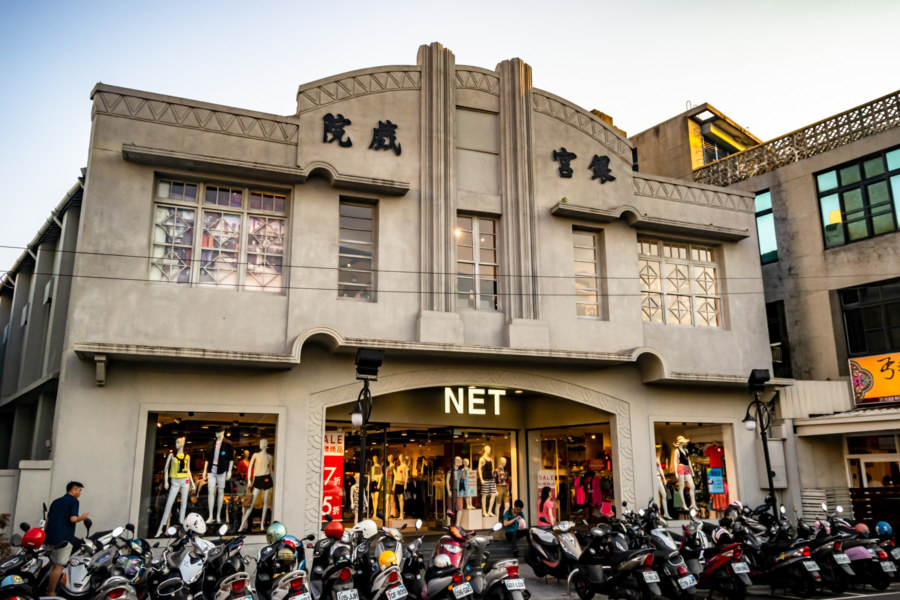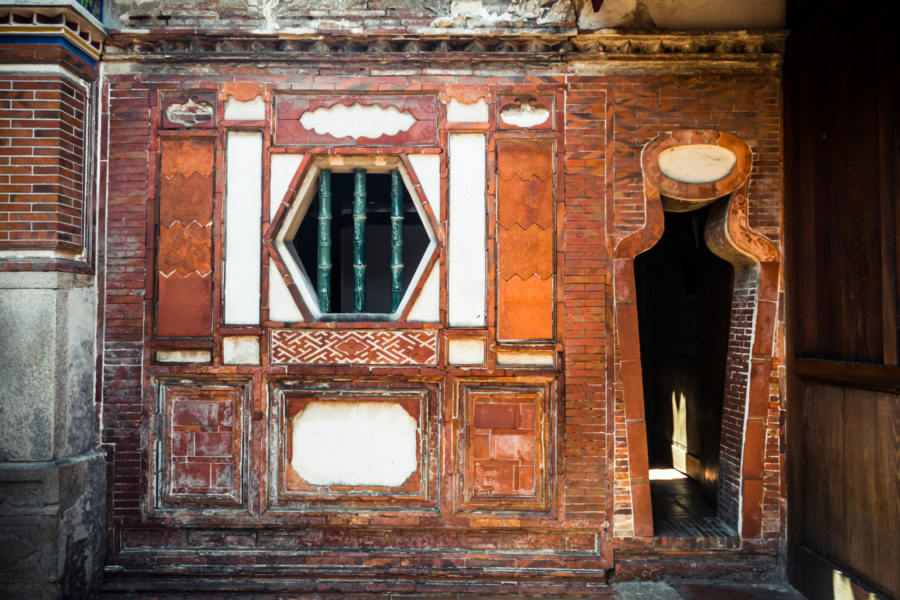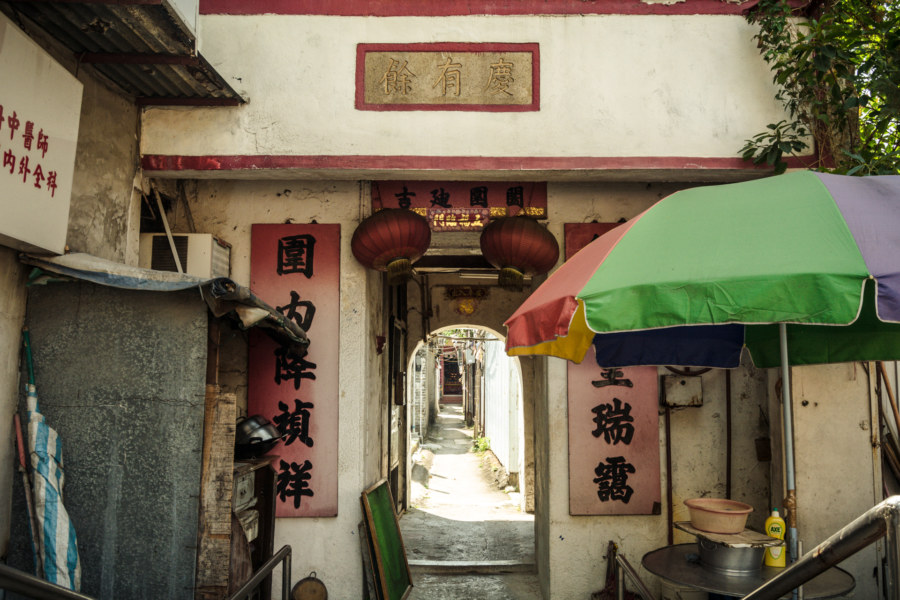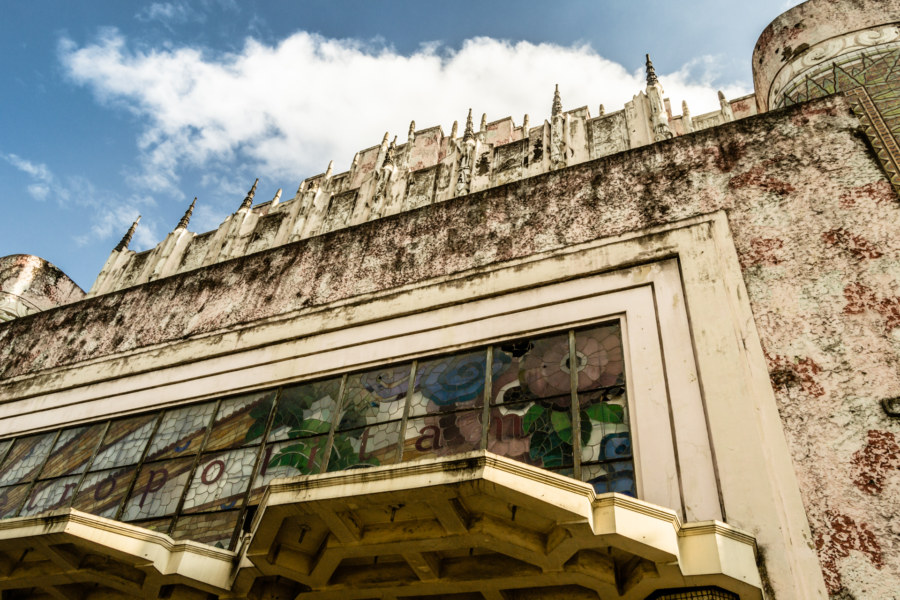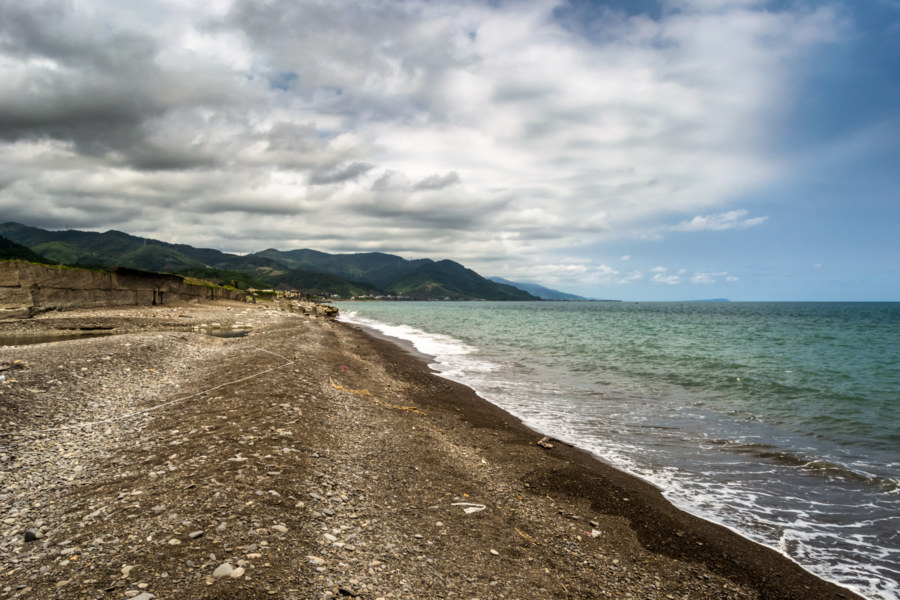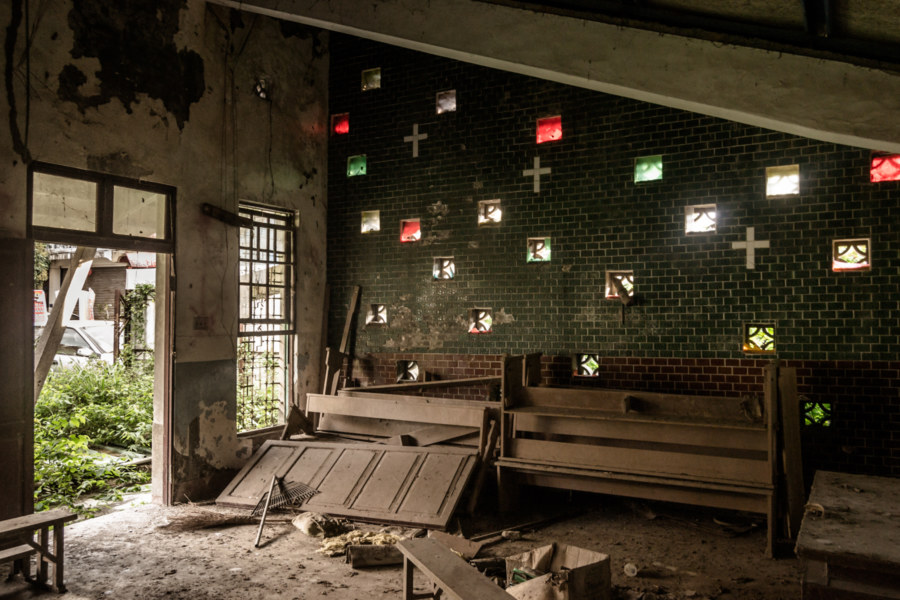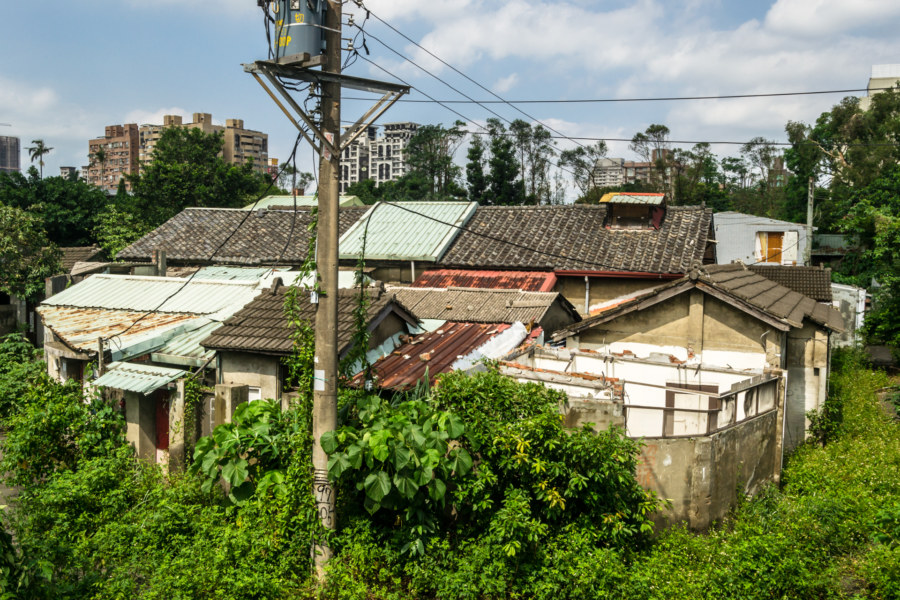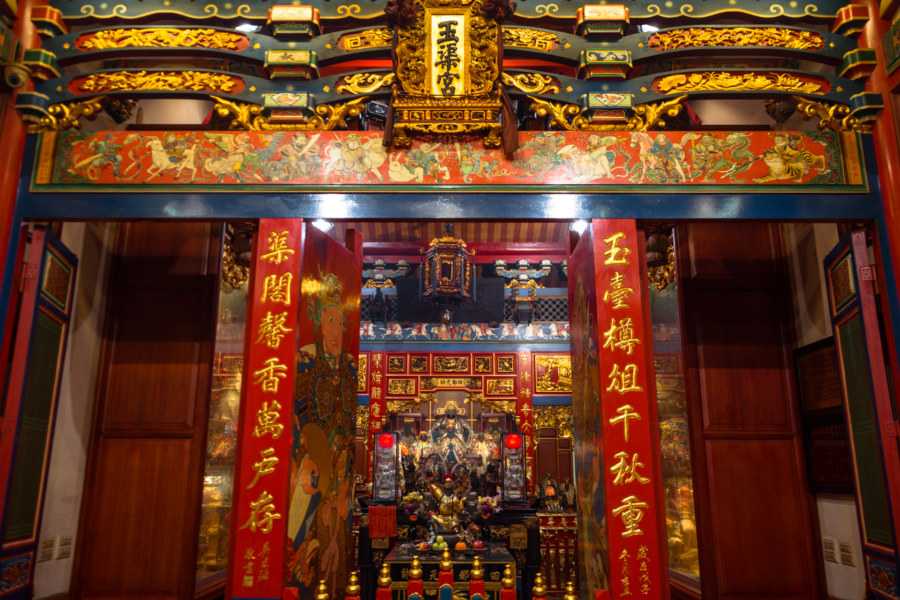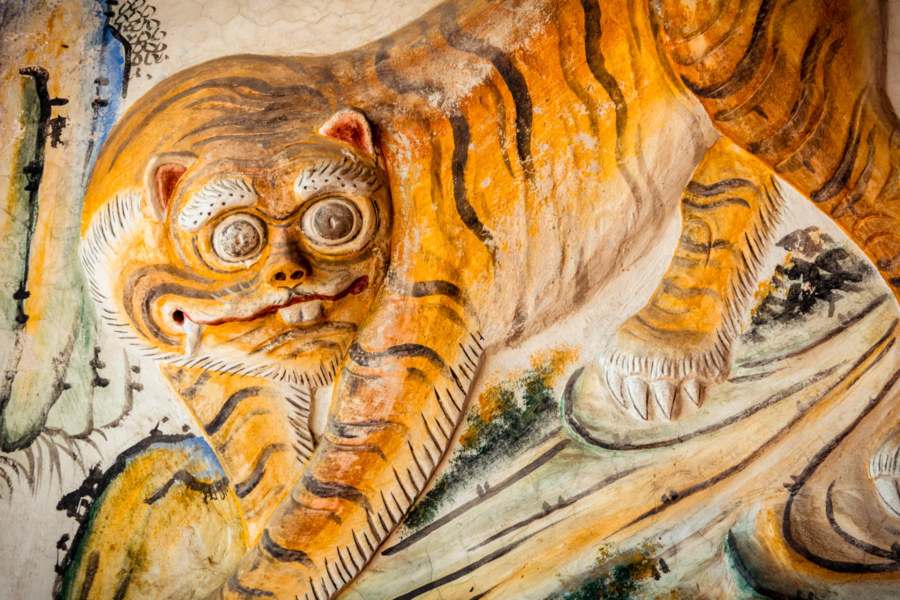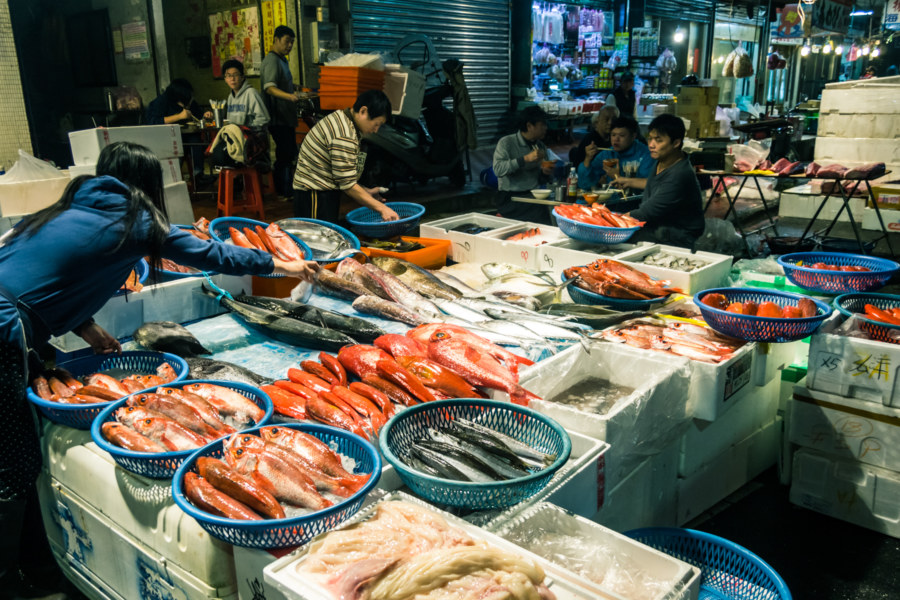Despite living in Changhua City for half a year I never paid much attention to the clothing store across the street from the historic Confucius Temple 彰化孔子廟. At that time my Chinese abilities were rudimentary and I wasn’t really aware of what kinds of buildings to watch for while navigating the variegated urban landscapes of Taiwan. Only after encountering Datong Theater 大同戲院 in Taitung City did I become fascinated by the rise and fall of Taiwanese cinema. Since then I have mapped the locations of more than a hundred vintage theaters and documented many of their fates. Most end up abandoned or destroyed—but Yíngōng Theater 銀宮戲院 earned a new lease on life after it was purchased by NET, a Taiwanese fashion retailer.
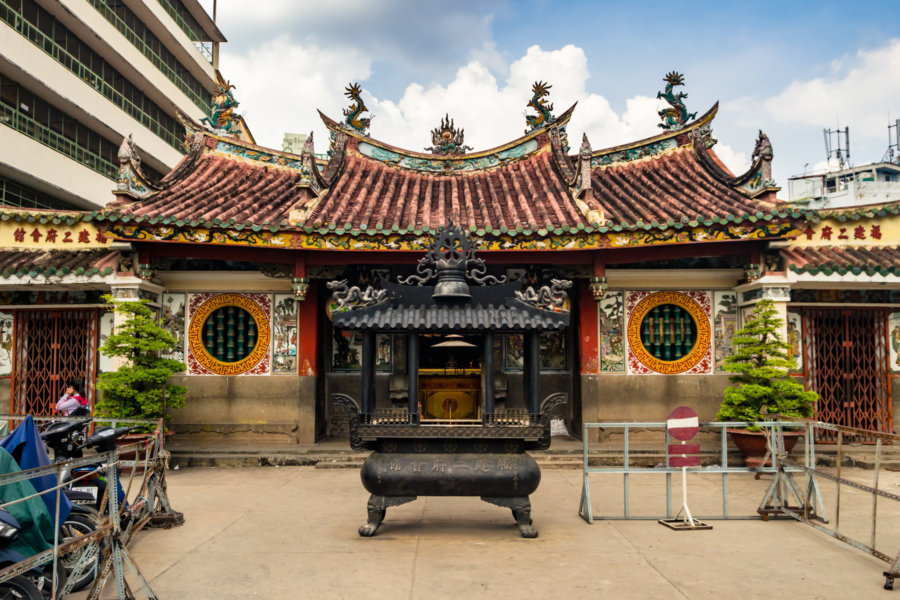
Posts with a historical angle, situating content in time and space. Here we go deeper into the past…
Huangxi Academy 磺溪書院
Built in 1887, Huángxī Academy 磺溪書院 is one of dozens of Qing dynasty era schools of classical studies in Taiwan. Located in Dadu, a small town in southwestern Taichung, it provides a window into a time when scholarship was more closely interwoven with spirituality. Apart from classrooms and areas for quiet study the academy also has an altar to the Five Wénchāng 五文昌: Kuí Xīng 魁星, Zhū Xī 朱熹, Guān Yǔ 關羽, Lǚ Dòngbīn 呂洞賓, and, of course, Wénchāng 文昌 himself. Collectively these Taoist gods represent classical Chinese culture and several are commonly venerated by students prior to writing exams. Structurally the academy follows a plan similar to a traditional Taiwanese courtyard home or sanheyuan with the addition of a large gatehouse and pavilion.
Nga Tsin Wai: The Last Walled Village of Kowloon
Nga Tsin Wai Village 衙前圍村 is widely known as the last walled village of Kowloon. Located not far from the former location of the infamous Kowloon Walled City 九龍城寨, the village traces its history back to the 1352 founding of its modest Tin Hau Temple 天后宮. It was fortified in 1724 to defend against bandits and pirates but has, in modern times, lost the moat, walls, and watchtowers that once protected residents from harm. As the very last of its kind in the urban heart of Hong Kong it has become a flashpoint for conflict between the Urban Renewal Authority and the many activist groups and citizens passionate about preserving what remains of Kowloon’s cultural heritage.
Manila Metropolitan Theater
Manila Metropolitan Theater, or simply the Met, is the largest and most famous Art Deco theater in Manila. Designed by the prolific Juan M. Arellano, the Met officially opened in 1931 and soon became a focal point for Manila’s high society. Like most of the rest of the city Manila Metropolitan Theater was heavily damaged in the Battle of Manila. The post-war era wasn’t kind to the Met; it fell into disrepute for decades until restoration efforts were undertaken in the late 1970s. Ownership disputes led to another phase of neglect in the mid-1990s and today it remains abandoned despite occasional efforts at rehabilitation.
Southern Taiwan Ride 2015: Fangliao to Manzhou
Last summer I embarked upon a weeklong bicycle tour in the deep south of Taiwan. I began in Tainan, cycled through Kaohsiung to Pingtung City, spent a day hanging out, and then continued on to Fangliao, where the coastal plain narrows to a thin wedge between the mountains and the sea. There is only one road leading south from here—which meant I covered a lot of ground I had already seen while riding all around Taiwan in 2013. I didn’t mind repeating that beautiful stretch of coastline and, actually, I was looking forward to checking out some places I had breezed by on that first big tour, particularly in Fangshan and Hengchun.
Chaozhou Jiukuaicuo Catholic Church 潮州九塊厝天主堂
While I was out riding in southern Taiwan last year I chanced upon an abandoned church by the roadside in a small village outside of Chaozhou, Pingtung. I only spent about ten minutes there and didn’t shoot many photos but have since realized that the story to tell is interesting enough to devote a full post to it. The formal name of this place is Jiǔkuàicuò Catholic Church 九塊厝天主堂, though this is commonly prefixed with Chaozhou to distinguish it from the many other villages with the same name in Taiwan. Details are scant but I should be able to provide a broad overview of how this church came to be here—and why it was left to the elements.
Jiahe New Village 嘉禾新村
Jiahe New Village (嘉禾新村) is one of more than 800 military dependents’ villages (Chinese: juàncūn 眷村) built in Taiwan in the late 1940s and 1950s to provide provisional housing for KMT soldiers and their families fleeing from the Chinese Civil War. Approximately two million people crossed the Taiwan Strait from China from 1945 to 1949, bolstering an existing population of approximately seven million. More than 600,000 of these Chinese immigrants ended up in military villages like this one in Zhongzheng, Taipei, which was forcibly abandoned only a couple of years ago as part of a wave of urban renewal projects sweeping the nation.
Lukang Yuqu Temple 鹿港玉渠宮
Yùqú Temple (玉渠宮) is a colourful temple in the back alleys of Lukang, one of the oldest and most traditional cities in Taiwan. Tracing its origins back to a simple shrine built in 1765, this small temple venerates Marshal Tian Du (田都元帥), the god of drama—and by extension traditional opera, theater, music, and other forms of performance art. Local gentry funded the construction of the first temple on this particular site in the twilight of Lukang’s commercial importance in 1902, during the Japanese colonial era. The temple underwent major renovations in 1967 and, in typical Taiwanese style, has been regularly improved and updated over the years.
Daodong Academy 道東書院
Dàodōng Academy (道東書院) is one of many Qing dynasty era academies scattered across central and southern Taiwan. Located in Hemei in Changhua, it was built in 1857, the 7th year of the Xianfeng Emperor (清咸豐七年), and operated as a private school devoted to classic Chinese literature, philosophy, and ethics, among other subjects. Commonly known to locals as Wénmiào (文廟, “Temple of Literature”), the academy also venerates Song dynasty scholar Zhū Xī (朱熹) and Kuí Xīng (奎星), the god of examinations.
Kanzaiding Fish Market 崁仔頂漁市場
Kànzǎidǐng Fish Market 崁仔頂漁市場 is supposedly the longest-running operation of its kind in northern Taiwan. Back in the Japanese colonial era the market was located along the banks of the Xùchuān River 旭川河 in Keelung, formerly a navigable canal running through the downtown core and emptying into the harbour. The name of the market is derived from a Taiwanese Hokkien term for the stone stairs that once lined the side of the canal; Kanzaiding literally means “top of the stairs”. The Japanese built a pier in the late 1920s, making it easy for fishermen to offload their catch next to the market, and convenient access to the railway network encouraged its growth.
